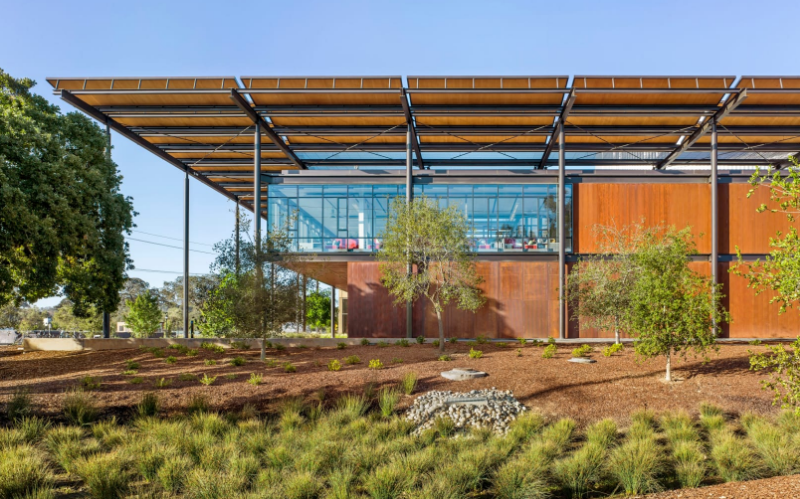The American Institute of Architects (AIA) Committee on the Environment (COTE) have selected this year’s recipients of the Top Ten Awards, the industry’s premier program celebrating sustainable design excellence. Now in their 21st year, the Top Ten Awards highlight projects that exemplify the integration of great design and great performance. Submissions are required to demonstrate how the project aligns with COTE’s rigorous criteria for social, economic, and ecological value. This year’s recipients will be honored at the 2017 AIA Conference on Architecture in Orlando.
For this year, COTE substantially revised its Measures of Sustainable Design, the criteria judges use to evaluate projects. New topics include impact on health, wellness, and economy. In past years, criteria was based largely on predicted performance, not actual performance as measured after occupying the buildings. Since 2014, past Top Ten recipients have been invited to submit post-occupancy data and narratives to be recognized with a single COTE Top Ten Plus award each year. In 2017, these separate tracks are merged: The ‘Plus’ designation will denote projects with exemplary performance data and post occupancy lessons.
Bristol Community College John J. Sbrega Health and Science Building; Fall River Mass.
Sasaki
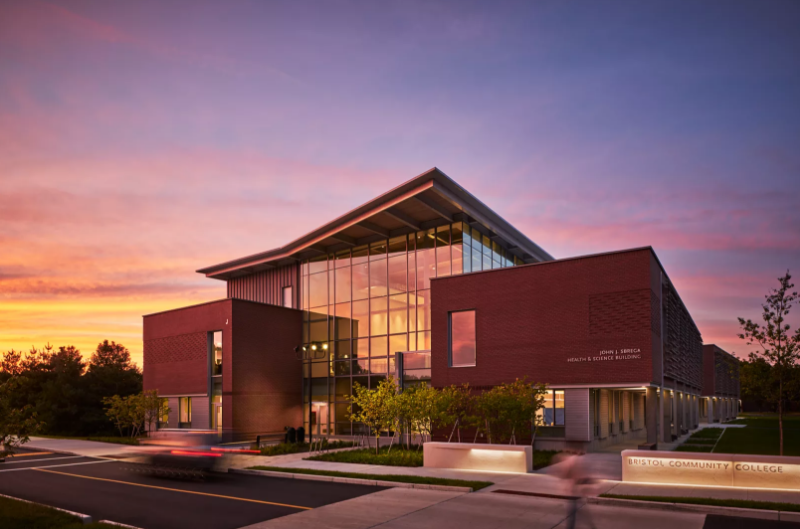 Courtesy Edward Caruso Photography.
Courtesy Edward Caruso Photography.
Bristol set ambitious goals of making its new science building not only elegant and inviting, but also a model of sustainability. The 50,000-square-foot building sets the standard as the first ZNE academic science building in the Northeast. Providing hands-on learning opportunities and care to underserved populations, its program accommodates instructional labs and support space for field biology, biotech, microbiology, and chemistry; nursing simulation labs; clinical laboratory science and medical assisting labs; dental hygiene labs; and a teaching clinic. Taking a holistic approach to the design and construction of the Sbrega Health and Science Building, the team uncovered innovative ways to eliminate the use of fossil fuels, increase efficiency, and dramatically reduce demand.
Brock Environmental Center; Virginia Beach, Va.
SmithGroupJJR
Top Ten Plus honor for exceptional post-occupancy performance
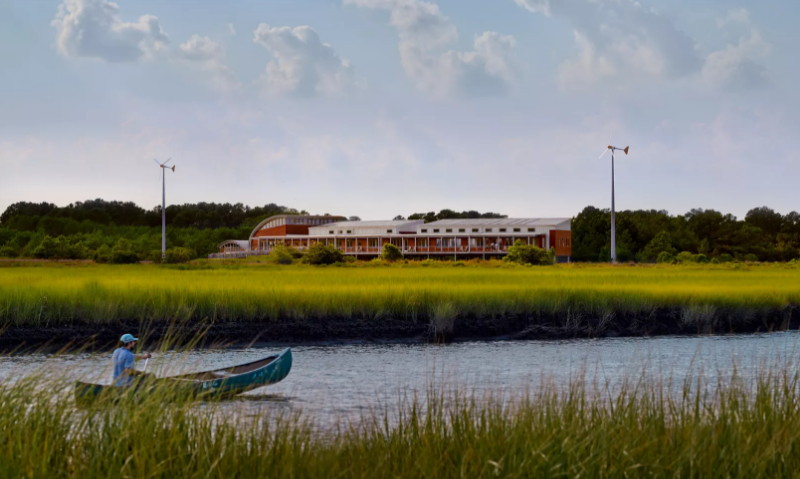 Photo courtesy Prakash Patel Photography.
Photo courtesy Prakash Patel Photography.
The Brock Environmental Center is a hub for the Chesapeake Bay Foundation’s Hampton Roads office, supporting their education, advocacy and restoration initiatives. The Center is designed to express CBF’s mission of collaboration to protect one of the nation’s most valuable and threatened natural resources – the Chesapeake Bay. CBF aspired to manifest true sustainability, creating a landmark that transcends notions of “doing less harm” towards a reality where architecture can create a positive, regenerative impact on both the environment and society. The Center surpasses LEED achieving zero-net-CO2 emissions, zero waste, and Living Building Challenge certification from the International Living Future Institute.
Chatham University Eden Hall Campus; Richland Township, Penn.
Mithun
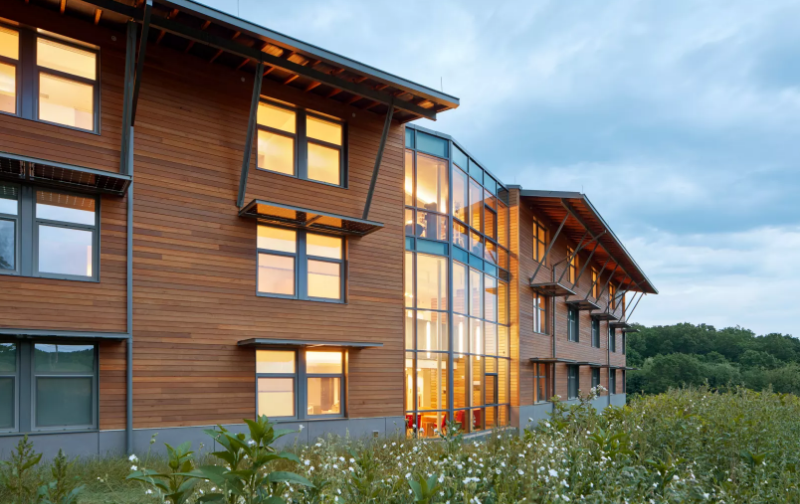 Photo courtesy of Bruce Damonte.
Photo courtesy of Bruce Damonte.
After receiving the donation of 388-acre Eden Hall Farm north of Pittsburgh, Chatham University conceived an audacious goal to create the world’s first net-positive campus. Home of the Falk School of Sustainability, Eden Hall Campus generates more energy than it uses, is a water resource, produces food, recycles nutrients, and supports habitat and healthy soils while developing the next generation of environmental stewards. Linked buildings, landscapes and infrastructure support an active and experiential research environment. New building forms, outdoor gathering spaces and integrated artwork complement and interpret natural site systems, while making cutting-edge sustainable strategies transparent and explicit.
Discovery Elementary School, Arlington Public Schools; Arlington, Va.
VMDO Architects
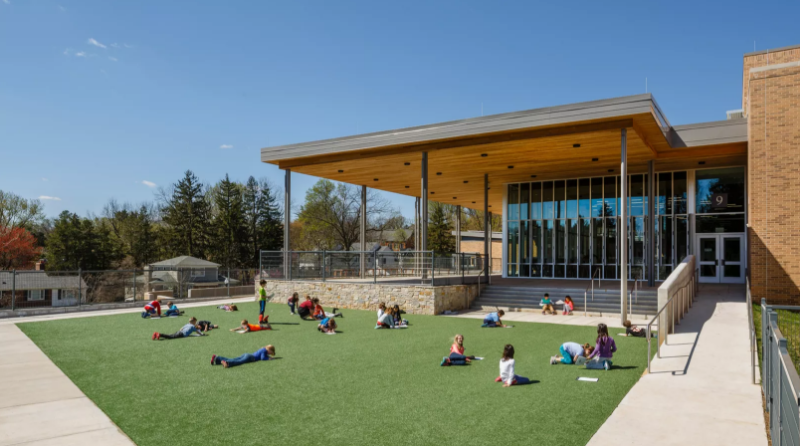 Photo courtesy Alan Karchmer; Lincoln Barbour & VMDO Architects.
Photo courtesy Alan Karchmer; Lincoln Barbour & VMDO Architects.
Discovery Elementary School is the largest zero-energy school in the US. The challenge was to integrate a 98,000 SF building into a residential neighborhood while keeping the entire PV array on the roof. By terracing the mass into a south facing hill, the project met local goals for scale, community goals for preservation of flat, open space for recreation, and global goals for ideal orientation for solar generation. Discovery offers a positive example of a solution to the global crisis of climate change – and along the way emboldens students with the expectation that they are creative participants in those solutions.
Manhattan Districts 1/2/5 Garage & Spring Street Salt Shed; New York City
Dattner Architects and WXY architecture + urban design
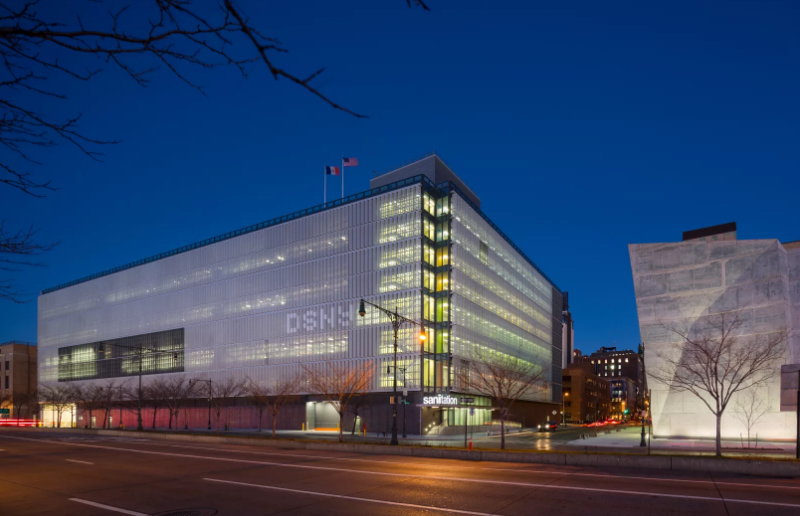
The Garage and Salt Shed celebrate the role of civic infrastructure by integrating innovative architectural design with sustainability and a sensitivity to the urban context. The building is wrapped in a custom perforated double-skin façade that reduces solar gain while allowing daylight and views in personnel areas. The 1.5 acre extensive green roof reduces heat-island effect, promotes biodiversity, and filters waste steam condensate and rainwater allowing it to be reused for truck wash. The projects are also benchmarks for NYC’s Active Design program, which promotes the health and fitness of occupants through building design.
Milken Institute School of Public Health, George Washington University; Washington, D.C.
Payette and Ayers Saint Gross
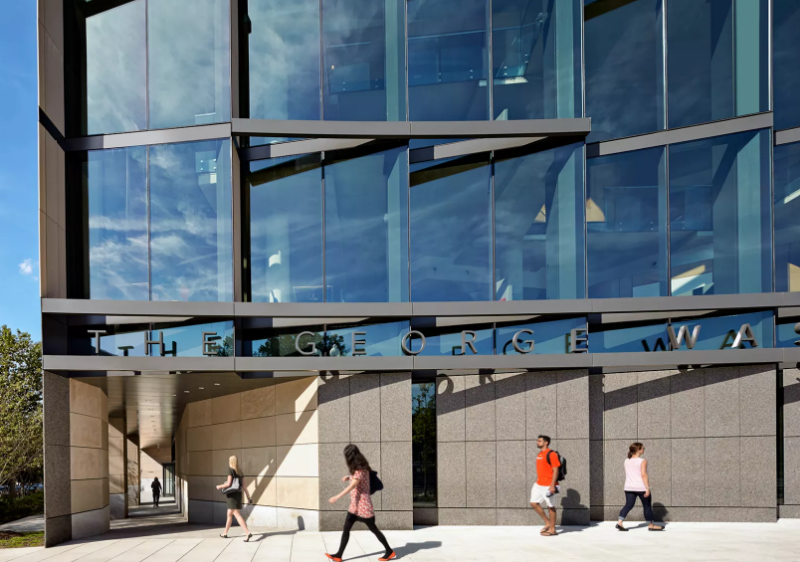 Photo courtesy Robert Benson Photography.
Photo courtesy Robert Benson Photography.
The Milken Institute School of Public Health at GWU embeds core public health values — movement, light/air, greenery, connection to place, social interaction, community engagement — in a highly unconventional, LEED Platinum building on an urban campus in the heart of the nation’s capital. Research offices, classrooms and study areas are clustered around an array of multi-floor void spaces that open the building’s dense core to daylight and views. An irresistible, sky-lit stair ascends all eight levels, encouraging physical activity. The pod-like classrooms are set in from the perimeter so informal study and social interaction space can overlook the bustling traffic circle.
Ng Teng Fong General Hospital & Jurong Community Hospital; Singapore
HOK, USA; CPG, Singapore; Studio 505, Australia
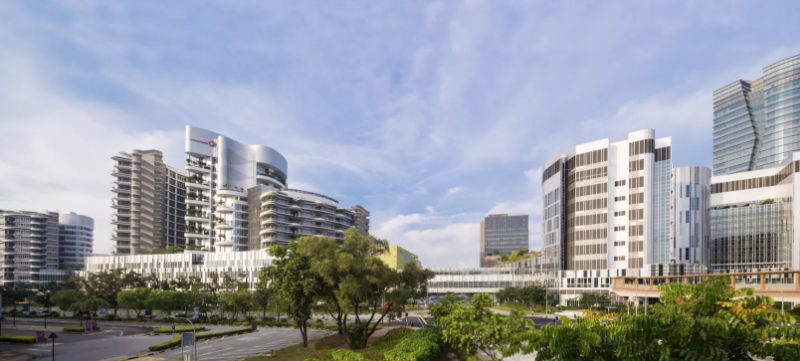 Photo courtesy Rory Daniel & CPG Consultants.
Photo courtesy Rory Daniel & CPG Consultants.
The Green Mark Platinum NTFGH is part of Singapore’s first medical campus to combine continuing care from outpatient to post-acute care. Based on passive principles, the performance-based design supports resource efficiency, health, and well-being. Seventy percent of the facility is naturally ventilated, representing 82% of inpatient beds. Unlike its Singaporean peers, NTFGH provides every patient with an adjacent operable window, offering daylight and views. An oasis in a dense city, NTFGH incorporates parks, green roofs and vertical plantings throughout the campus. The building uses 38% less energy than a typical Singaporean hospital and 69% less than a typical U.S. hospital.
NOAA Daniel K. Inouye Regional Center; Honolulu
HOK with Ferraro Choi & WSP
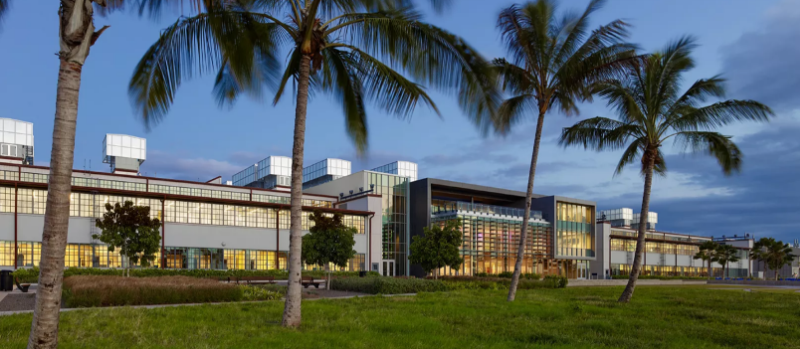 Photo courtesy Alan Karchmer Photography.
Photo courtesy Alan Karchmer Photography.
Located on a national historic landmark site on Oahu’s Ford Island, the National Oceanic and Atmospheric Administration’s Inouye Regional Center features the adaptive reuse of two World War II-era airplane hangars linked by a new steel and glass building. The hangars inspired beautifully simple design solutions for how the center uses air, water and light. The LEED Gold complex accommodates 800 people in a research and office facility that integrates NOAA’s mission of “science, service and stewardship” with Hawaii’s cultural traditions and ecology. The interior environment, which is based on principles of campus design, creates a central gathering place.
R.W. Kern Center; Amherst, Mass.
Bruner/Cott & Associates
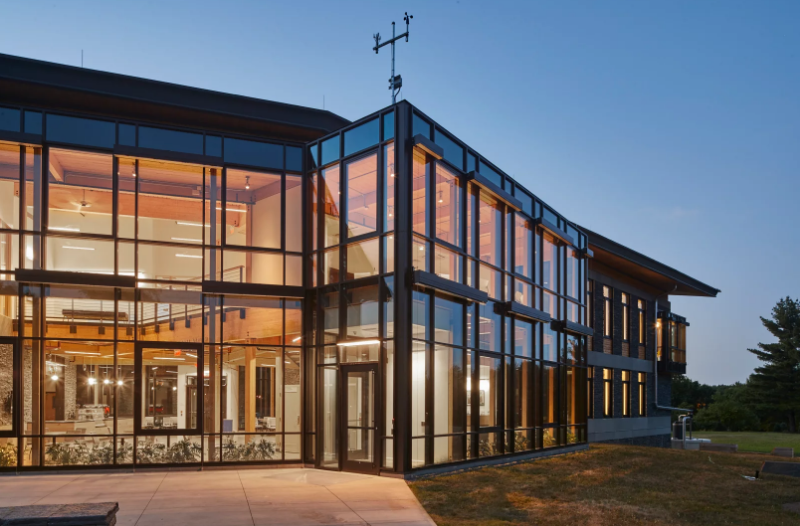 Photo courtesy Robert Benson Photography.
Photo courtesy Robert Benson Photography.
Hampshire College’s R.W. Kern Center is a 17,000-square-foot multi-purpose facility designed to meet the Living Building Challenge. As the gateway to campus, Kern includes classrooms, offices, a café, and gallery space. The building is self-sustaining— generating its own energy, capturing its own water, and processing its own waste. The Kern Center is the result of an inclusive and integrated design process and wholehearted commitment to the environmental mission by the whole team. The project demonstrates Hampshire’s dedication to the highest level of sustainability and stewardship, and to the college’s mission of critical inquiry, active leadership and hands-on learning.
Stanford University Central Energy Facility; Stanford, Calif.
ZGF Architects LLP
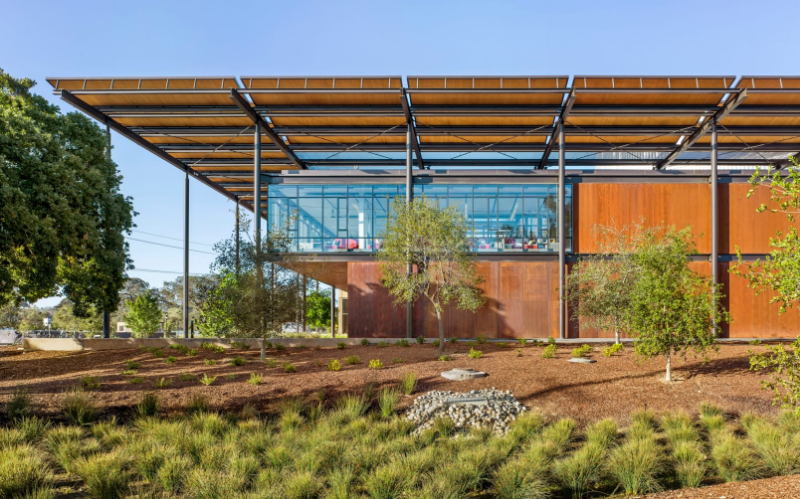 Photo courtesy Robert Canfield.
Photo courtesy Robert Canfield.
At the heart of Stanford University’s transformational, campus-wide energy system is a new, technologically advanced central energy facility. The system replaces a 100% fossil-fuel-based cogeneration plant with primarily electrical power—65% of which comes from renewable sources—and a first-of-its-kind heat recovery system, significantly reducing greenhouse gas emissions, and fossil fuel and water use. The facility comprises a net-positive-energy administrative building, a heat recovery chiller plant, a cooling and heating plant, a service yard, and a new campus-wide main electrical substation. Designed to sensitively integrate into the surrounding campus, the architectural expression is one of lightness, transparency and sustainability to express the facility’s purpose.
Related Stories
Office Buildings | Dec 6, 2022
‘Chicago’s healthiest office tower’ achieves LEED Gold, WELL Platinum, and WiredScore Platinum
Goettsch Partners (GP) recently completed 320 South Canal, billed as “Chicago’s healthiest office tower,” according to the architecture firm. Located across the street from Chicago Union Station and close to major expressways, the 51-story tower totals 1,740,000 sf. It includes a conference center, fitness center, restaurant, to-go market, branch bank, and a cocktail lounge in an adjacent structure, as well as parking for 324 cars/electric vehicles and 114 bicycles.
Energy Efficiency | Dec 6, 2022
Washington state’s Building Code Council mandates heat pumps in all new residential construction
The Washington State Building Code Council has voted to require heat pumps for all new residential construction starting in July 2023. The new mandate has drawn criticism over concerns that it will add costs to housing construction, especially given current supply chain challenges for heat pumps.
Geothermal Technology | Dec 6, 2022
Google spinoff uses pay-as-you-go business model to spur growth in geothermal systems
Dandelion Energy is turning to a pay-as-you-go plan similar to rooftop solar panel leasing to help property owners afford geothermal heat pump systems.
Sustainability | Dec 5, 2022
5 ways sustainability professionals can help reduce construction's carbon footprint
Mark Chen, Sustainability Manager at Skanska, has found five specific ways to help the construction industry reduce its carbon footprint.
Legislation | Nov 23, 2022
7 ways the Inflation Reduction Act will impact the building sector
HOK’s Anica Landreneau and Stephanie Miller and Smart Surfaces Coalition’s Greg Kats reveal multiple ways the IRA will benefit the built environment.
Wood | Nov 16, 2022
5 steps to using mass timber in multifamily housing
A design-assist approach can provide the most effective delivery method for multifamily housing projects using mass timber as the primary building element.
Energy-Efficient Design | Nov 14, 2022
How to achieve net zero energy in five steps
Martine Dion and Ethan Seaman share net zero energy best practices with owners and developers.
Green | Nov 13, 2022
USGBC updates LEED v4 to better address greenhouse gas emissions and climate change
The U.S. Green Building Council (USGBC) will update the LEED v4 green building certification program to “more directly address greenhouse gas emissions and climate change” according to a USGBC news release.
Green | Nov 13, 2022
NREL report: Using photovoltaic modules with longer lifetimes is a better option than recycling
A new report from the U.S. National Renewable Energy Laboratory (NREL) says PV module lifetime extensions should be prioritized over closed-loop recycling to reduce demand for new materials.
Green | Nov 13, 2022
Global building emissions reached record levels in 2021
Carbon-dioxide emissions from building construction and operations hit an all-time high in 2021, according to the most recent data compiled by the Global Alliance for Buildings and Construction.


